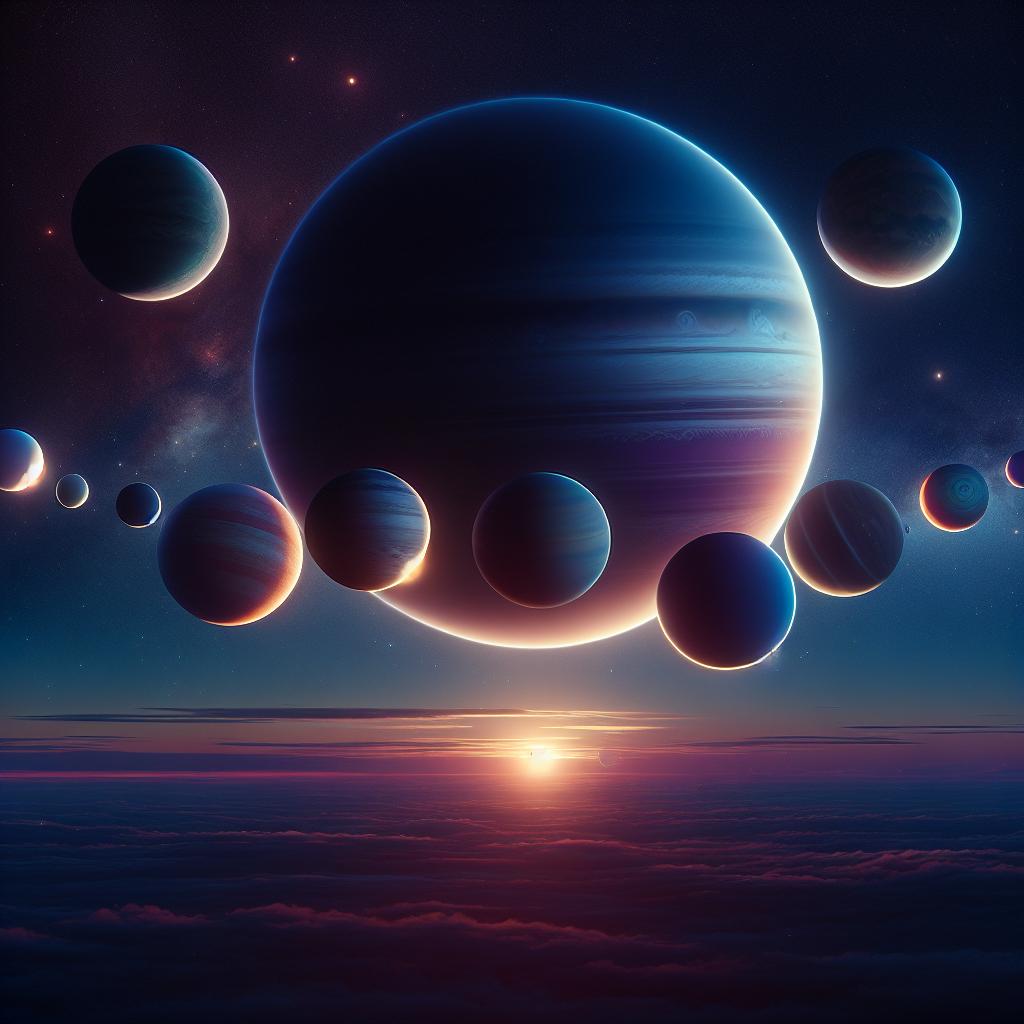

Planets aligned in twilight sky
As we welcome June, residents of Outer Banks can anticipate a splendid display of cosmic ballet in the early morning sky. The wonders of our solar system are prepared to set the stage for an exciting month for astronomy enthusiasts, according to the latest skywatching tips from NASA’s Jet Propulsion Laboratory.
Saturn and Mars have been stealing the show for the past few weeks. As they continue to dominate the a.m. hours, they will be joined by another planetary behemoth – Jupiter, as the month progresses. Their close proximity to the Earth during this time makes their visibility exceptionally bright and clear even without the aid of a telescope. The best time to catch these planets in action is around twilight, just before the break of dawn.
Apart from the celestial bodies in our solar system, the night sky offers unending mysteries and spectacles. However, for those new to skywatching, distinguishing between man-made satellites, meteors, and other celestial objects can be a challenge. The key to understanding these objects lies in their movement. Satellites move steadily across the sky in a straight line, unlike meteors, which flash across the sky in an instant and then disappeared. The speed and trajectory can help an observer distinguish between different celestial bodies.
While some sources are buzzing with the news of a “parade of planets”, the reality might not match the hype. The rumored spectacle says six planets will align and be visible to the naked eye in early June. Yet, this parade’s lead actors, Jupiter and Mercury, are predicted to be positioned at or below the horizon during dawn’s twilight hours, obscuring their visibility. As for the outer planets, Uranus and Neptune, they are too faint to be seen without a telescope, especially as daylight creeps in.
For those disappointed in fact-checking the rumor, there is still a cosmic event to look forward to: the ‘real’ planet parade is scheduled for June 29. On this day, a spectacular alignment of Saturn, the Moon, Mars, and Jupiter will take place across the morning sky. This celestial alignment will undoubtedly be a significant highlight of June 2024.
It’s time to dust off those telescoped or simply lean back in your lawn chair to marvel at the celestial display of our solar system. The Universe is indulging us with its celestial wonders as it presents us with sky-watching delights this June. If you ever find uncertainty in identifying the objects in the night sky, remember there are many online resources available to assist, including interactive sky maps and guides. Happy Skywatching and clear skies!
News Summary The Nashville school shooting on March 27, 2023, resulted in the loss of…
News Summary Kilmar Abrego Garcia, a Maryland resident, was mistakenly deported to El Salvador, leaving…
News Summary Mangalore faces a severe coastal erosion crisis with nearly 50% of Dakshina Kannada's…
News Summary Wanchese, a North Carolina fishing community, faces significant challenges as fishermen contend with…
News Summary Kill Devil Hills has introduced new regulations for cluster homes and cottage courts,…
News Summary On April 30, 2022, Southern Shores will host the much-anticipated Flat Top Cottage…